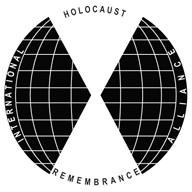“We share a commitment to throw light on the still obscured shadows of the Holocaust.”
-- Declaration of the Stockholm International Forum on the Holocaust
 INTERNATIONAL HOLOCAUST REMEMBRANCE ALLIANCE
INTERNATIONAL HOLOCAUST REMEMBRANCE ALLIANCE
“We share a commitment to throw light on the still obscured shadows of the Holocaust.”
-- Declaration of the Stockholm International Forum on the Holocaust
In 1920, Roman Vishniac left his native Russia and arrived in Berlin with his camera. He began creating a unique and poignant visual record of European Jewish life, documenting the world of shtetls, Jewish farmers, and Yeshiva students.
In the new book, Roman Vishniac Rediscovered, his work from the 1920s in Europe through the 1960s in America is brought together.
“His photographs of pre-war Jewish life became the iconic face of a world that was destroyed,” said Judith Cohen, director of the U.S. Holocaust Memorial Museum’s photographic reference collection.
In 1935, the American Jewish Joint Distribution Committee, the world’s largest Jewish relief group, asked Vishniac to take photographs to help raise money for Jews in Eastern Europe. As Hitler’s persecution of the Jews intensified, the relief agency sent him to document Nazism in Western Europe. So as not to raise suspicion, Cohen said, the photographer would sometimes pose his young daughter in front of Nazi propaganda so it would look as if he was taking a picture of her instead.
The USHMM hopes that the more people who see Vishniac’s photos, the higher the chances of some of his subjects being recognised and their stories recaptured. Several years ago, for example, a woman saw a photo of a farmer at an exhibition at the Holocaust museum, and identified Chaim Simcha Mechlowitz, her grandfather, who had died in Auschwitz.
On 26 August 2014, a cooperation between the museum and New York’s International Center of Photography, which owns the Vishniac’s negatives and photographs, saw the launch of a new website: http://vishniac.icp.org
Vishniac survived the Holocaust despite being arrested and interned in France after the German invasion. After immigrating to the U.S. in 1940, he continued his career, and became a pioneer of photomicroscopy — photography that uses a microscope to show what the naked eye cannot see.
Photo: Roman Vishniac, [Jewish schoolchildren, Mukacevo], ca. 1935–38. Photo © Mara Vishniac Kohn. Courtesy International Center of Photography